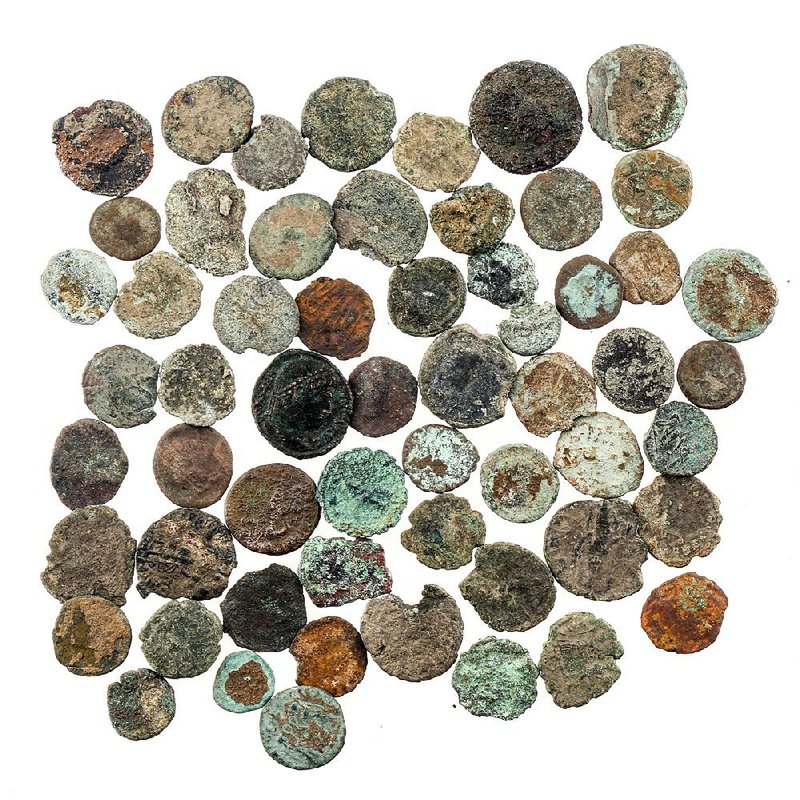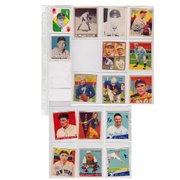Excuses, excuses. Every time the subject of downsizing comes up in a conversation, and with me that's often, the other person has a rash of reasons for dodging the task. This person invariably starts by saying, "I really need to clear out my... (fill in the blank, house, attic, storage unit, basement, parent's house, garage, all the above), but ..." and you know the rest.
Many of us would rather poke needles in our eye or eat rats' tales than go through our stuff, much less our parents' leftovers. Chief among the excuses is fear you will get rid or something truly valuable and not know it. Right behind that, though you won't admit it, is the worry that you might have to face the fact that what you thought was valuable isn't. You want to cling to your fantasy that those Beanie Babies you've been hanging onto, or that Norman Rockwell mug collection will put your kids through college. You'd better have a plan B.
So, you close the door on the matter, literally. And stuff sits. I've seen you.
The liquidators at Everything But The House, an online estate sale marketplace, deal with this conundrum every day. They have experts in a dozen specialties, including fine art, antiques, fashion, rugs, coins, sports memorabilia, military medals, even firearms, who can clarify at a glance whether something warrants a closer look, or, more often, whether it doesn't.
When EBTH professionals first assess a house, they put aside items they suspect could fetch a nice price, said John Neiheisel, general art and antique specialist at EBTH. They send a photo of the item or collection to the expert in that genre to find out whether the item would benefit from special handing.
Everything else goes up for sale online auction style, starting at a dollar, and the bidding begins. EBTH liquidates entire households, but will also do single high-end items, using an open auction platform not hindered by location, and targeting collectors. EBTH gets 20 percent to 40 percent, Neiheisel said.
Now, please pour yourself a sobering cup of coffee and listen. Here's what doesn't matter: How much you paid for an item. How much you love it. How much it is selling for on eBay.
"There's a lot of sentimental value out there," Neiheisel said. "People get really upset when something they treasure isn't worth much."
What does matter is the market, the market, the market. "When everyone wants that one thing, that is where the buying power is," Neiheisel said. You cannot control that, sorry.
When you're ready to find out what your stuff is worth, start with Google, he suggests. Search for what items like yours have sold for online. Look for sold secondary market results as opposed to asking prices, which are meaningless.
If you think you have a truly valuable item, consider paying someone to appraise it, Neiheisel said. With an appraisal in hand, you can sell it yourself.
To help you find out whether you have any buried treasures, I tapped five EBTH experts and asked what the most surprising hot sellers in their categories were and the duds. Here's what I learned:
Furniture
Surprise! One category that often amazes people when they discover its value is Mid-Century modern furniture, Neiheisel said. Before you haul it off to the Goodwill, have it appraised. EBTH recently sold a Lane coffee table after the design of Andre Bus for $825.
Sorry ... Those "collector" items popular in the '70s, '80s and '90s, which implied their value would only increase, are a bust. Due to the mass production and wave upon wave of these items coming to market, the value of almost anything sold with the moniker "limited edition" has fallen off greatly. A lot of six Franciscan Masterpiece collector's plates, three Gorham Norman Rockwell mugs, and a bushel of Ty Beanie Babies sold for $1 per lot.
Fashion
Surprise! Look no further than your closet for hidden gems, said Kara McClurg, EBTH fashion and accessories expert. Handiwork and history are the heavy hitters. Vintage items that were made well, with quality craftsmanship and good materials could fetch a handsome ransom: Those 1960s Levi 501 jeans, your dad's Lucchese cowboy boots, grandma's Lucite handbag are examples. Pendleton wools are also highly coveted.
Sorry ... That dress you recently paid $500 for new and those big-ticket shoes depreciated the minute you got them home. "They don't bring much of a return unless they're by a top designer," McClurg said.
Coins and Stamps
Surprise! Uniform buttons, including rare Civil War era buttons, and patches can fetch more than a thousand dollars each, says Anton Bogdanov, coin, currency and stamp specialist for EBTH. Today a strong market exists for early U.S. Military insignia, and especially for Army Air Force squadron patches.
Sorry ... Old coins are more common than you'd expect. A combination of factors including rarity, demand, and condition will determine auction value. A coin's age will rarely have any effect on price, Bogdanov said. You can buy the most common varieties of ancient Greek and Roman bronze coins for under $20 apiece.
Sports and Memorabilia
Surprise! Some of the most valuable sports memorabilia are baseball cards and bobbleheads, said Ben Morrill, sports and memorabilia specialist. Early 20th-century cards from between 1930 and 1960 can attract a nice price, due to the low number of hall-of-fame player rookie cards released in the early 1950s, like the 1955 Roberto Clemente rookie card and the 1954 Hank Aaron rookie card. Bobbleheads from the early 1960s can bring anywhere from $75 to $145 depending on the team and its condition.
Sorry ... Baseball cards from the 1980s and 1990s are a bust. These cards' value fell after Topps, the sole producer of baseball cards from 1956 to 1980, ended its monopoly. From 1981 on, other manufacturers like Donruss, Upper Deck, and Fleer, flooded the market. The high volume of cards lowered their value.
For those seeking emotional support during this process, my new book, Downsizing the Family Home: A Workbook (Sterling) just came out Jan. 2. Part journal, part scrapbook, it will help you chronicle as you let go.
Syndicated columnist Marni Jameson is the author of two home and lifestyle books, including Downsizing the Family Home -- What to Save, What to Let Go (Sterling Publishing 2016).
HomeStyle on 01/20/2018


